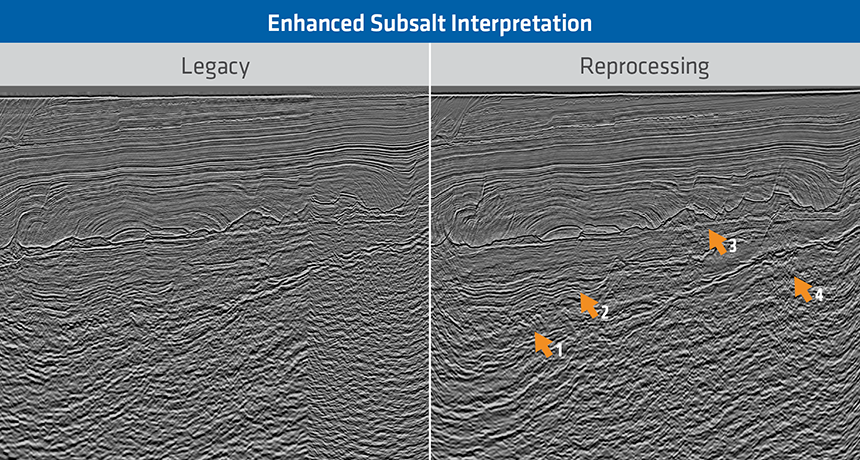The rejuvenated exploration of the Congo Shelf, with the ongoing Congo Licensing Round Phase II 2018-2019, provides new opportunities in open acreage within a proven area. After 30 years of exploration and production offshore Congo there is a renewed focus on the shallow waters and exploration for overlooked subsalt accumulations on the Congo Shelf.
The new regional PGS MegaSurveyPlus data, covering the shallow water Congo Shelf, illuminates the proven subsalt, and postsalt plays. The data has been successfully organized, merged and integrated by Société Nationale des Pétroles du Congo (SNPC) and PGS, enhancing image resolution and data integrity and allowing accurate decisions to be made.
For the first time, the presence of a subsalt Barremian mobile shale layer has been illuminated and identifies a number of various subsalt structures to explore. Discoveries made in analogous and proximal neighboring context, such as the Ruche Marine North East-1 drilled in 2018, are very encouraging and confirm the subsalt potential of the shallow water Congo Shelf.
A Clearer Image of the Shallow Water Congo Shelf
The Congo MegaSurveyPlus comprises 12 surveys, all reprocessed from field data using the latest broadband processing techniques, to deliver PSDM and prestack volumes and clearer images.
The modern imaging techniques used on the multi-vintage data attenuate complex multiple reflections, deghost the source and receiver responses on the legacy surveys and resolve imaging uncertainty with an integrated regional model building flow.
GeoStreamer data was used to enhance the legacy data, producing a broadband merged volume benefiting from an improved regional velocity model.
Most of the wells drilled within the survey area predate the acquisition of the input surveys by at least eight years. Revaluation of these wells alongside the depth migrated dataset (including a multisensor survey) allows higher confidence interpretations and mapping, and leads to more accurate seismic facies analysis.
The subsalt petroleum system has further potential in the high-quality reservoirs of several formations within sizable structural and stratigraphic traps.
The advances in imaging techniques now provide a high-quality depth migrated dataset over the Congo Shelf where the possibility for near-field exploration, optimizing capital expenditure costs and reducing technical risks, provides an attractive opportunity to build on the previous success.

Contact a PGS expert
Please contact a member of our AMME team for more information.